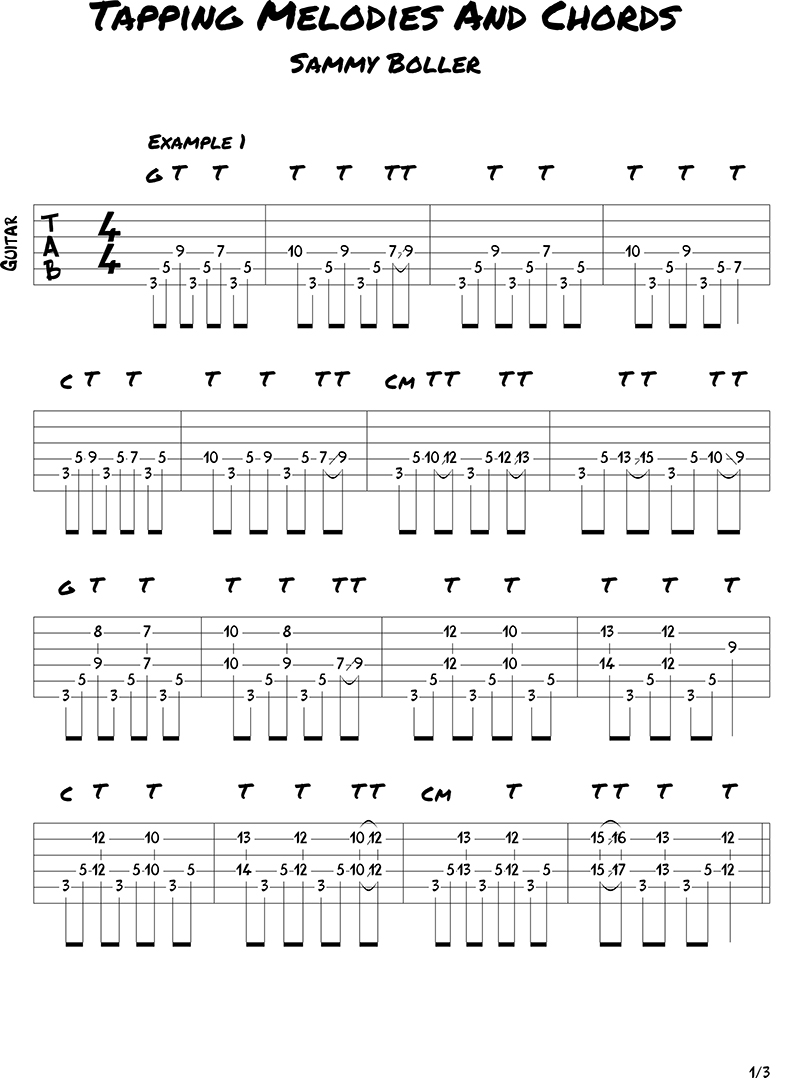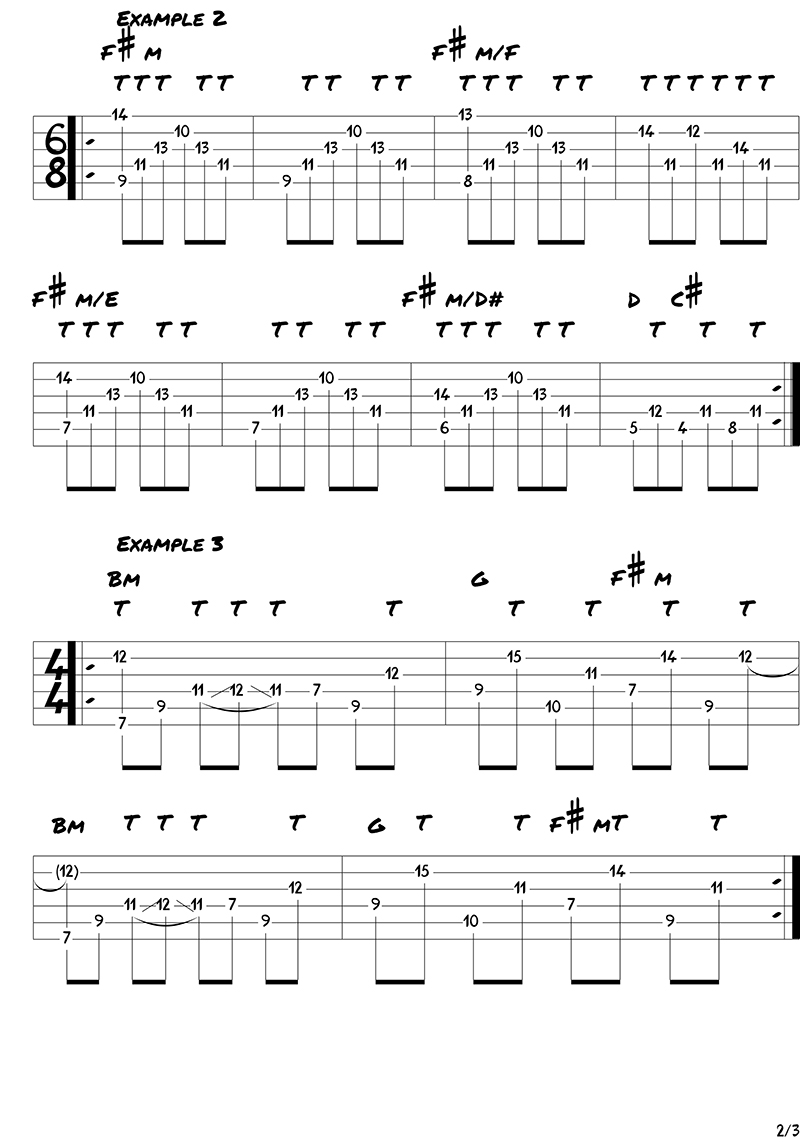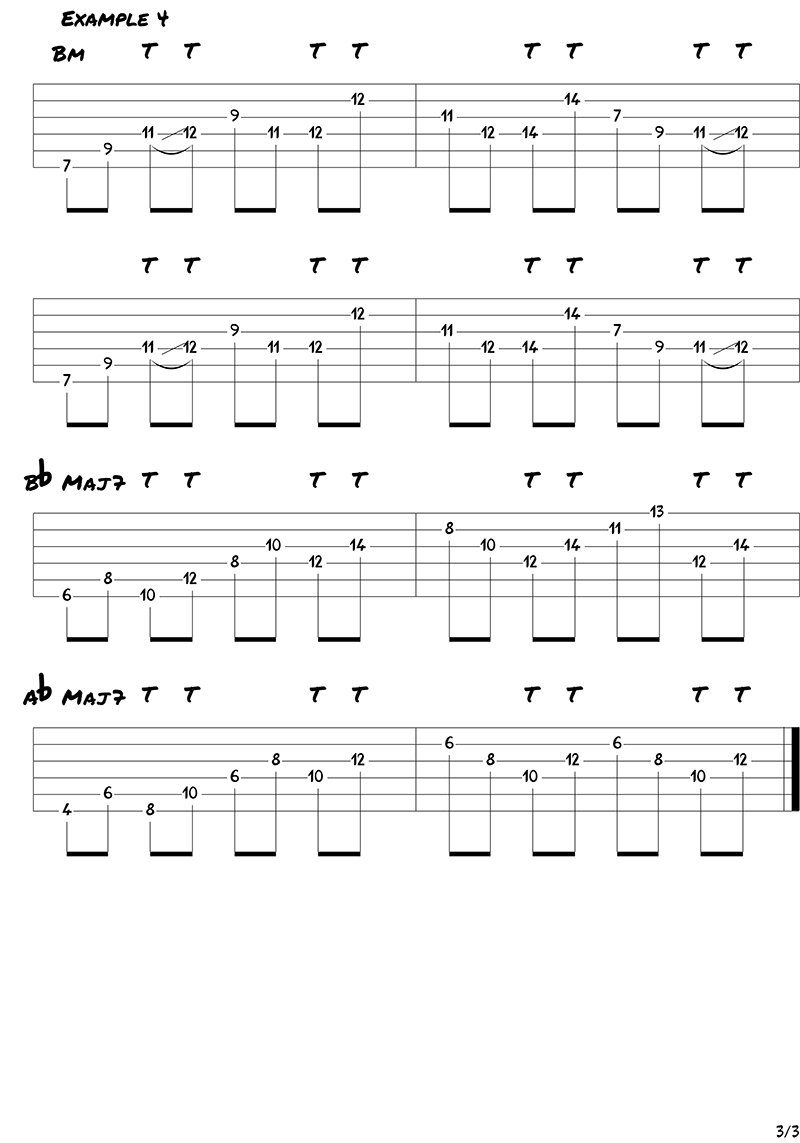How to Simultaneously Tap Melodies and Play Chords
This approach has a lot of possibilities and can open up new doors in writing riffs and solos.
In this edition of Secrets of Shred, I'm going to show you a new approach I've been using to tap melodies and play chords at the same time. This technique is based on navigating around the neck by thinking like a pianist would—where the right hand plays the melody and the left hand plays the changes. I believe this approach has a lot of possibilities and can open up new doors in writing riffs and solos. I'm going to demonstrate four riffs and chord progressions for you, so let's jump into it.
EXAMPLE 1 is a theme in G Major. The chord progression is G-C-Cm. It starts with the left hand playing hammer-ons in the shape of a G power chord on low strings and is followed by the right hand tapping a melody on the D string. In the 5th bar, the left hand changes to a C power chord and melody has a slight variation with slides on the D string. The second phrase beginning on the 9th bar is the same melody, but this time with a harmony tapped on the B string. I achieve this by tapping with my first and third finger on my right hand.

EXAMPLE 2 utilizes a progression with a descending bass line. The pattern is based on an F#m(add9) arpeggio shape with the bass note descending by a half step every two bars. The melody with the right hand outlines the changes. For this riff, I’m using my first, second and third fingers on my right hand to tap the inner notes of the chords as well as the melody.
For EXAMPLE 3, we move to the key of B minor. This chord progression in this riff is Bm-G-F#m. In this riff, I once again utilize the shape of a power chord in the left hand. The right and left hands work together in achieving the inner notes of the arpeggios while the first and third fingers of the right hand play the melody.

For our final example is also in the key of B minor. The progression for EXAMPLE 4 is Bm-Bbmaj7-Abmaj7. When tapping 7th chords of any kind, I hammer the 1st and 5th of the chord with my right and and the 3rd and 7th with my left hand. The relationship between the intervals in both hands is a 5th so it makes it easy to visualize.

This piano tapping technique has opened up a lot of new pathways for me and I hope it does the same for you. There are endless possibilities for this approach so take it as far as you can. Cheers!
Sammy Boller is a guitarist from Detroit, MI. His debut instrumental record will be released later this year. To contact Sammy or ask him a question, email him at sammyboller@gmail.com or follow him on Instagram @sammyboller
Get The Pick Newsletter
All the latest guitar news, interviews, lessons, reviews, deals and more, direct to your inbox!







![Joe Bonamassa [left] wears a deep blue suit and polka-dotted shirt and plays his green refin Strat; the late Irish blues legend Rory Gallagher [right] screams and inflicts some punishment on his heavily worn number one Stratocaster.](https://cdn.mos.cms.futurecdn.net/cw28h7UBcTVfTLs7p7eiLe.jpg)


